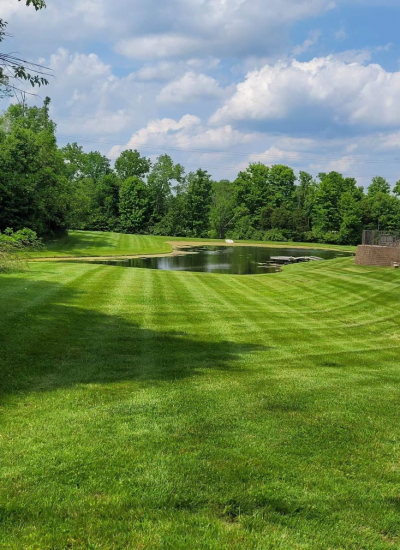Maintaining a commercial property requires year-round attention to ensure it remains attractive and functional in every season. Each season brings unique challenges and opportunities for landscaping, and addressing these effectively can enhance the beauty and usability of your property. This blog offers essential seasonal commercial landscaping tips, highlighting the importance of professional landscaping and regular property upkeep.
Spring Landscaping Tips
Spring is the season of renewal, making it the perfect time to refresh your commercial landscape after the winter months.
Clean Up and Preparation: Start by cleaning up debris, fallen branches, and dead leaves. This prepares the landscape for new growth and prevents pests and diseases from taking hold.
Soil Preparation: Spring is an ideal time to test and amend the soil. Adding compost or organic matter improves soil health, promoting vigorous plant growth throughout the year.
Planting and Mulching: Plant new flowers, shrubs, and trees during spring. Choose plants that are suited to your local climate and soil conditions. Apply mulch to flower beds and around trees to retain moisture and suppress weeds.
Irrigation System Check: Inspect and repair your irrigation system to ensure it’s functioning efficiently. Check for leaks, clogs, and adjust the settings for the upcoming warmer months.
Summer Landscaping Tips
Summer brings heat and dryness, requiring strategies to keep your landscape healthy and vibrant.
Water Management: Implement efficient watering practices to conserve water while keeping plants hydrated. Water early in the morning or late in the evening to reduce evaporation. Consider installing drip irrigation systems for targeted watering.
Pruning and Trimming: Regularly prune and trim plants to encourage healthy growth and maintain a neat appearance. Remove dead or damaged branches to prevent disease and improve air circulation.
Pest and Weed Control: Monitor for pests and weeds, and address issues promptly. Use integrated pest management (IPM) techniques and eco-friendly herbicides to keep the landscape healthy without harming the environment.
Lawn Care: Mow the lawn regularly, keeping the grass at a height that promotes root growth and resilience. Aerate compacted soil and apply fertilizer as needed to maintain a lush, green lawn.
Fall Landscaping Tips
Fall is a crucial season for preparing the landscape for the winter months and ensuring it recovers well in spring.
Leaf Removal: Regularly remove fallen leaves to prevent them from smothering the grass and causing diseases. Use leaves as mulch or compost them to enrich the soil.
Planting and Transplanting: Fall is an excellent time for planting trees and shrubs, as the cooler temperatures and increased rainfall help establish strong root systems. Transplant any plants that need relocating during this time.
Fertilization: Apply a slow-release fertilizer to lawns and flower beds to provide nutrients that support plant health through the winter and into the spring.
Winter Preparation: Prepare your landscape for winter by insulating plants with mulch, wrapping delicate shrubs with burlap, and ensuring that irrigation systems are drained and winterized.
Winter Landscaping Tips
Winter maintenance ensures that the landscape remains healthy and ready to thrive when warmer weather returns.
Snow and Ice Management: Implement snow and ice removal plans to keep pathways, parking lots, and entrances safe and accessible. Use environmentally friendly de-icing products to minimize damage to plants and soil.
Tree and Shrub Protection: Protect trees and shrubs from winter damage by wrapping them in burlap or using protective barriers. Prune dead or weak branches to prevent breakage from snow and ice.
Winter Interest: Incorporate plants that provide winter interest, such as evergreens, berries, and ornamental grasses. These plants add color and texture to the landscape during the dormant season.
Planning for Spring: Use the winter months to plan for spring landscaping projects. Evaluate the landscape’s performance over the past year and make necessary adjustments to improve its appearance and functionality.
FAQ
Why is seasonal commercial landscaping important? Seasonal commercial landscaping is important because it ensures that the landscape remains attractive and functional year-round. Each season requires specific maintenance tasks to address unique challenges and opportunities, promoting overall landscape health and beauty.
What are some essential spring landscaping tasks? Essential spring landscaping tasks include cleaning up debris, preparing the soil, planting and mulching, and checking the irrigation system. These tasks prepare the landscape for new growth and ensure a vibrant start to the growing season.
How can businesses manage landscaping during the summer? During summer, businesses should focus on efficient water management, regular pruning and trimming, pest and weed control, and lawn care. These practices help maintain a healthy and attractive landscape despite the heat and dryness.
What are key fall landscaping activities? Key fall landscaping activities include leaf removal, planting and transplanting, fertilization, and preparing the landscape for winter. These tasks help the landscape recover from summer and prepare for the colder months.
How should businesses approach winter landscaping? Businesses should focus on snow and ice management, protecting trees and shrubs, incorporating plants with winter interest, and planning for spring. These activities ensure the landscape remains healthy and ready to thrive in the spring.
Maintaining a commercial landscape requires year-round attention to ensure it remains beautiful and functional in every season. By following these seasonal commercial landscaping tips and working with professional landscapers, businesses can create and maintain attractive outdoor spaces that enhance their property’s appeal and usability. Regular seasonal maintenance not only keeps the landscape looking its best but also promotes long-term health and sustainability.

